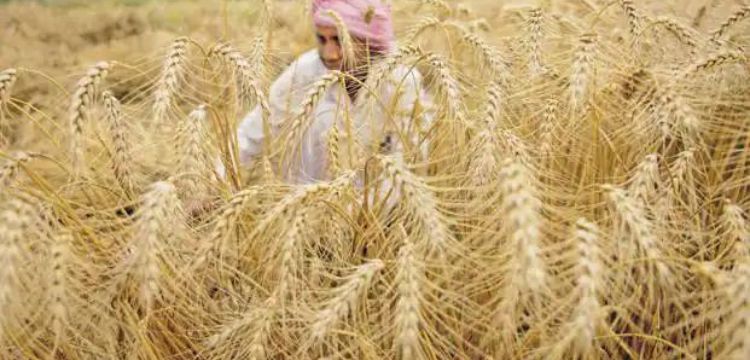[vc_row][vc_column][vc_column_text dp_text_size=”size-4″]
In an effort to ensure an ample food supply for its growing population, Pakistan is contemplating an ambitious wheat production target that exceeds 33 million tons for the 2023-24 season.
As reported by a national daily, the Federal Committee on Agriculture (FCA) is poised to establish the national wheat production target at 33.5 million tons during its upcoming meeting scheduled for this Saturday. This marks an increase from the previous year’s production of 28.4 million tons, which was achieved by cultivating the same 22.8 million acres and aiming for an 18 percent boost in productivity.
This approach signifies a departure from the traditional strategy of maximizing cultivation area, a feat rendered unfeasible due to a shortage of water for irrigation purposes, as emphasized by an official.
Also Read: Pakistan’s Debt Surged By Nearly Rs. 40 Trillion In The Past Five Years
The agricultural sector, accounting for approximately one-fifth of the country’s GDP, has grappled with the challenge of meeting the wheat demand, a dietary staple for over 240 million people. The emphasis now lies on enhancing productivity by increasing per-acre yield, steering away from the conventional approach of expanding cultivation area, which has been hindered by water scarcity.
The proposed wheat production targets for various regions include 25.6 million tons for Punjab, 4.5 million tons for Sindh, 1.85 million tons for Khyber-Pakhtunkhwa, and 1.6 million tons for Balochistan.
The primary focus is on harnessing high-yielding, locally developed seeds to achieve a per-acre production ranging from 40 to 50 maunds. The provincial government of Punjab intends to ensure the availability of 0.5 million tonnes of certified seeds, along with a subsidy of Rs. 1,500 per bag for 16 high-yielding varieties, covering 1.2 million acres.
Also Read: Oil Prices Surge Amid Escalating Israel-Gaza Conflict
The official acknowledged the challenging yet practical approach of the province, underscoring that the increasing demand for enhanced crop production significantly influences policy decisions. Vertical growth, concentrating on available areas while considering horizontal expansion as a secondary approach, is regarded as the practical solution to sustain progress in this direction.
The province aims to elevate wheat production from 21 million tonnes last year to 25.6 million tons. This entails a substantial 21 percent increase in per-acre yield, reaching an ambitious target of 40 maunds per acre, up from last season’s 33 maunds per acre.
Challenges such as fertilizer availability and pricing are being actively addressed through focused efforts, including awareness campaigns in rainfed areas and the dissemination of production plans to field formations. Timely sowing, adequate irrigation supplies, and the prompt commencement of sugarcane crushing are considered essential for achieving favorable yields.
[/vc_column_text][/vc_column][/vc_row]











